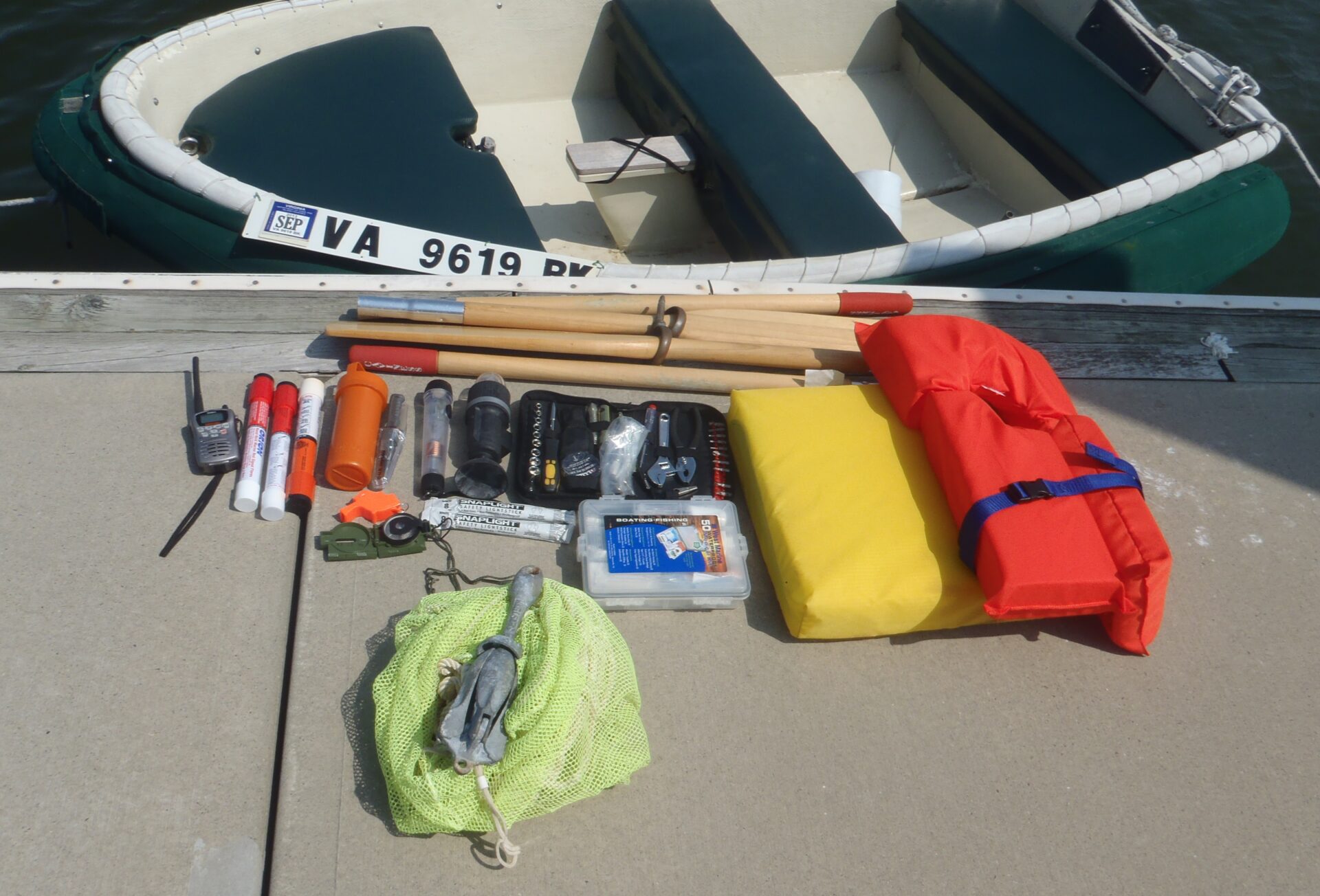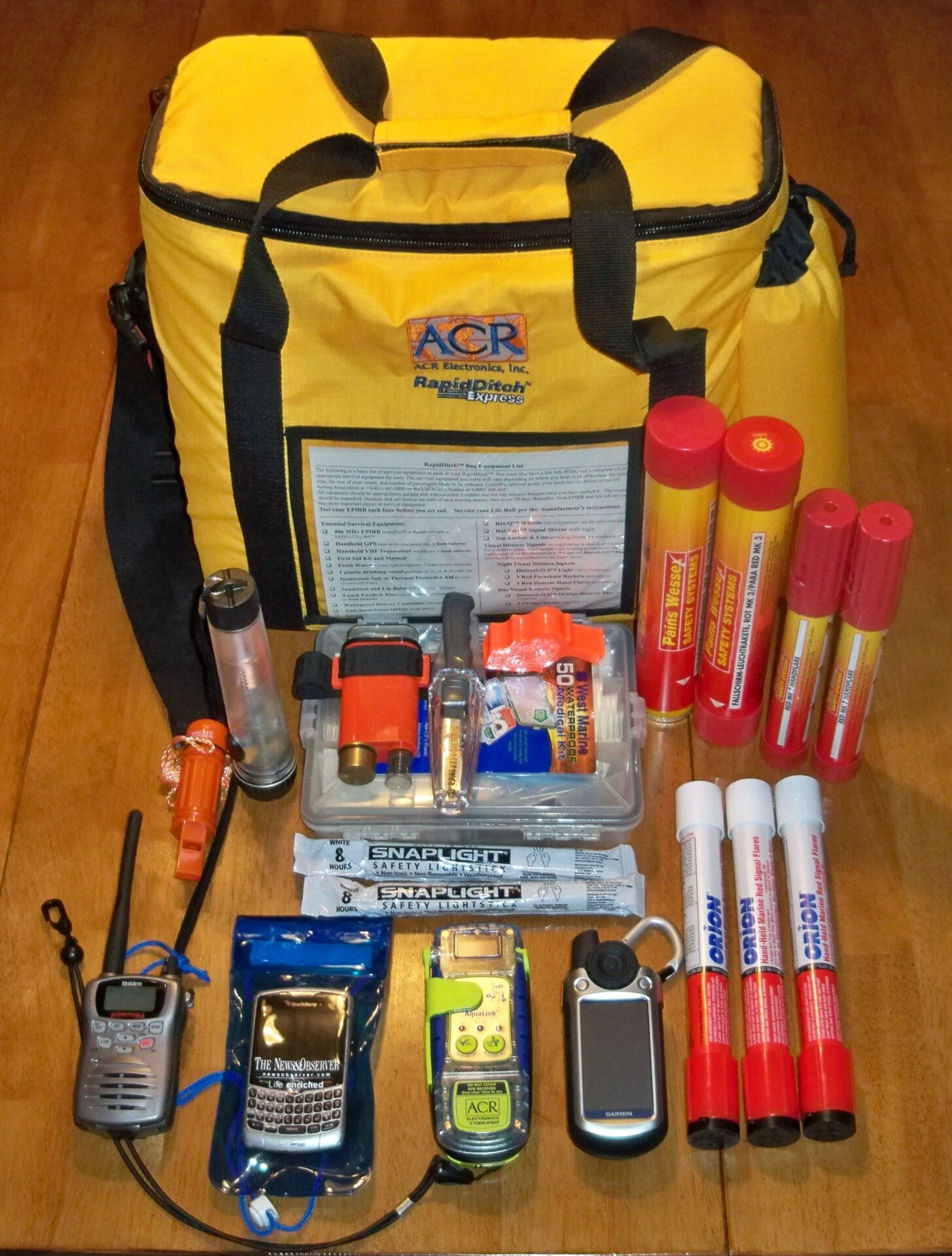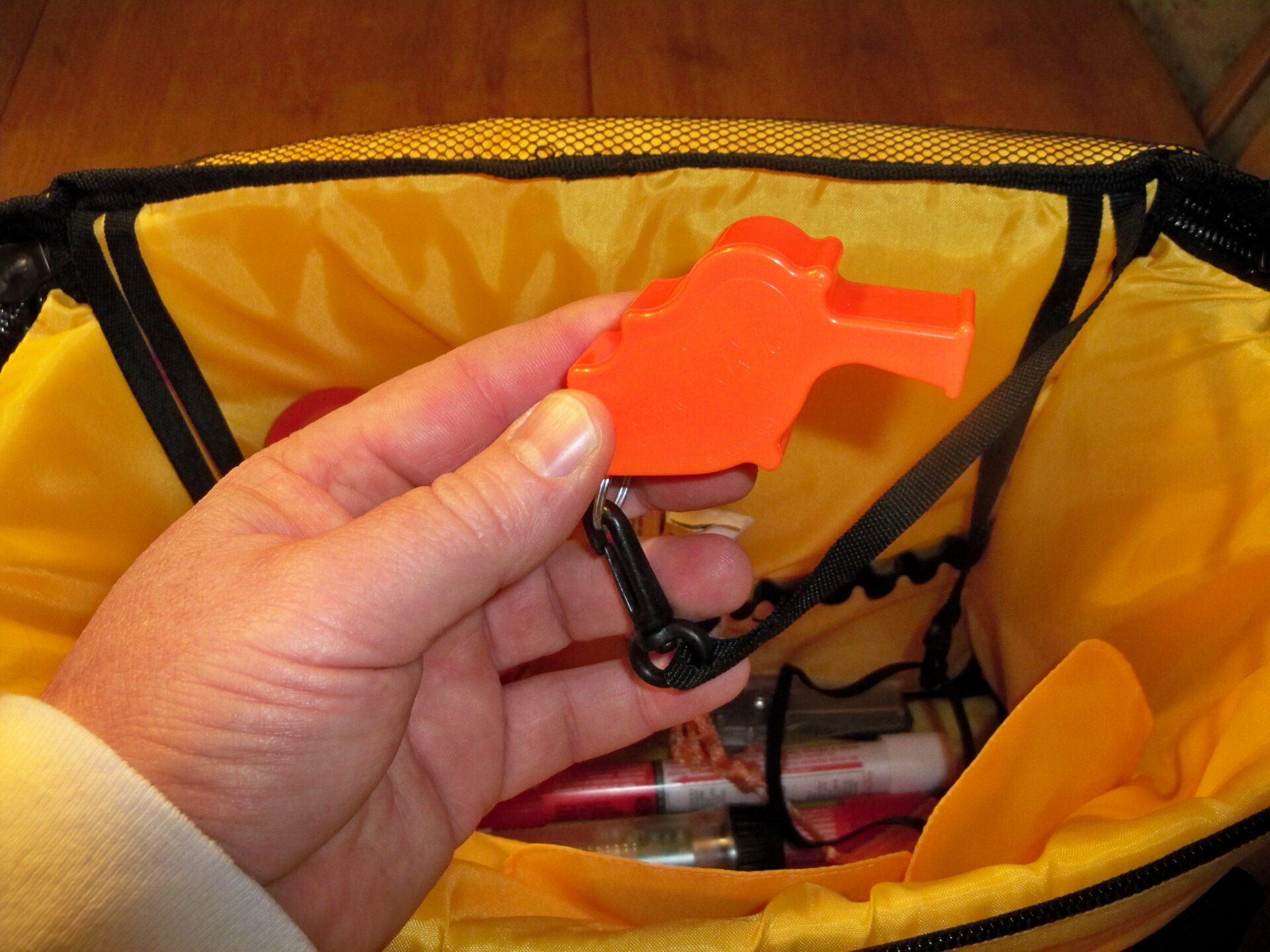On average, boat owners are a safety-conscious lot when it comes to outfitting and operating our primary vessels. From flares and lifejackets to EPIRBs and VHF radios, most of us try to anticipate Murphy’s laws and cheat Davy Jones prior to even leaving the dock, be it for an afternoon on the water or multi-year cruise. That’s why I’m constantly amazed at the number of boaters who fail to properly outfit their dinghy to the same level of safety.
From ferrying people and supplies between boat and shore (a necessity for those who like anchoring out) to providing a means of exploring that neat creek, dinghies are the waterborne equivalent of the family car, one that both enhances and adds versatility to any cruising experience. The problem is all that time, effort and money spent outfitting your cruising vessel won’t do you a bit of good once aboard your dinghy—unless you’ve had the foresight to properly outfit it as well.
Making the Case Let’s illustrate by way of example. While anchored in some pristine cove, your two teenage kids decide to take the dinghy to visit a new friend on one of the boats anchored a mile or so away. On the way over, the engine dies. No problem, they can use the oars to row towards their friend’s boat—or could if they had any.
As the wind picks up and sweeps them past their destination and out toward the bay, they sensibly decide to drop anchor while trying to get the engine started—or would if there was an anchor onboard. It’s rougher in the bay and water begins splashing into the dinghy. Now would be a good time to start bailing—if there was a pump or bailer onboard. It would also be comforting to be able to call dad on the VHF radio for help, however the handheld VHF is sitting on the chart table back at the boat—there aren’t any flares onboard either.
I could go on, but you get the picture. Most of us wouldn’t get underway without equipment such as lifejackets, flares, or an anchor onboard, so why should a trip in the dinghy be any different? Let’s take a look at how to increase the safety of every dinghy ride, both for you and everyone else onboard.
The Basics The requirements for on-board safety equipment is mandated by Transport Canada and largely depends on the type and length of your dinghy. Full details can be found on the Transport Canada website, but the items commonly required include a life jacket of the correct size for each person onboard, anchor and rode, buoyant heaving line, sound producing device (air horn or whistle), a bailer and (if operating after dark) proper navigational lighting. Throwable flotation devices (such as a buoyant seat cushion), while not required on most dinghies, are nonetheless good to have.
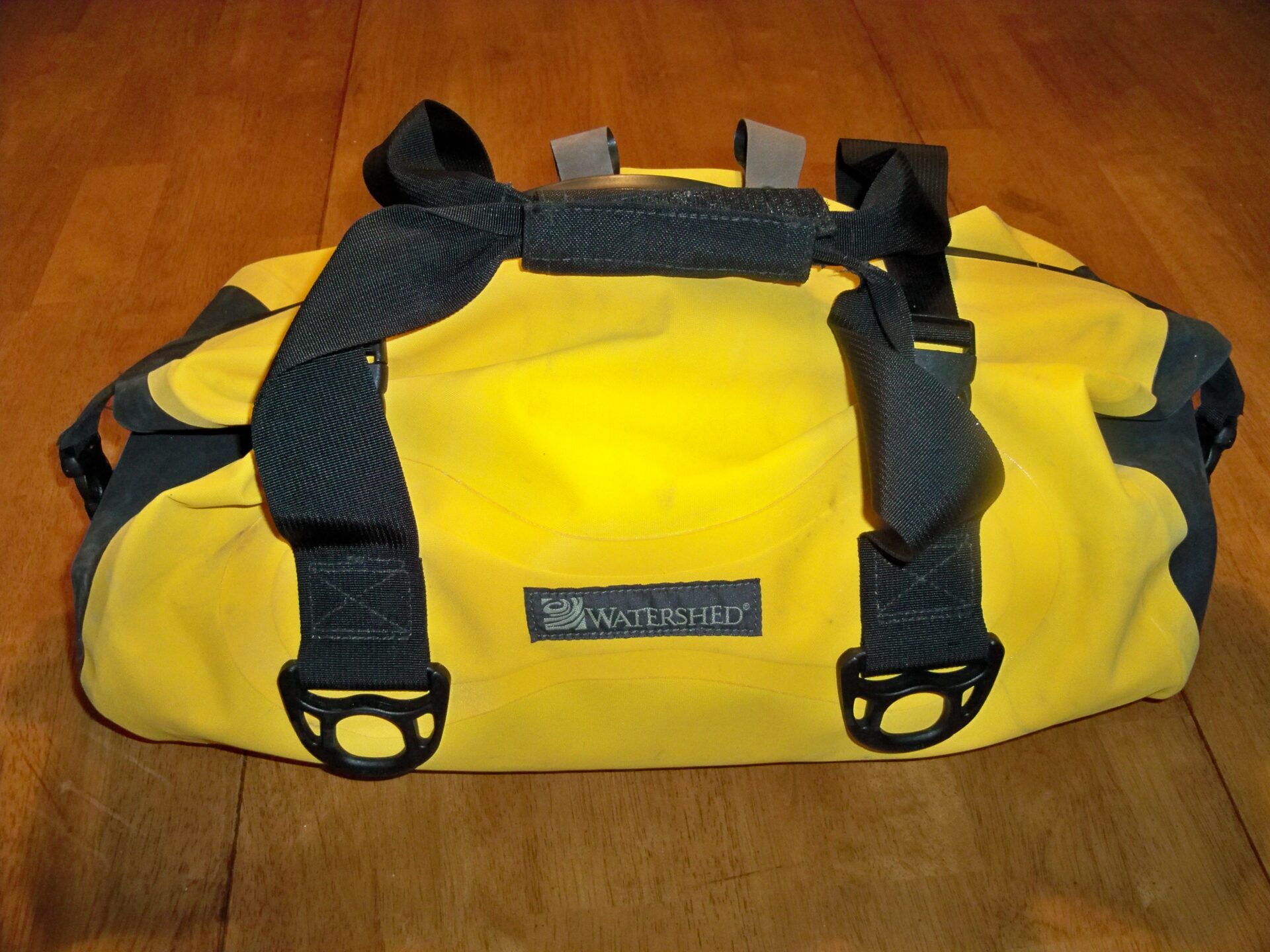
Dinghy Grab Bags The key to ensuring your dinghy is properly outfitted each trip is to make placing required gear onboard as easy as possible. A lifejacket bag makes it easier to toss and store PFDs onboard. Similarly, a dinghy “grab bag” containing the rest of the necessities will keep everything organized and easy to bring.
Any non-corrosive, buoyant watertight box or container of suitable size can serve as a grab bag. Dry bags or smaller abandon-ship bags (which are usually constructed of nylon and padded with foam) work well too. Regardless of what type or style you choose, make sure it’s large enough to carry what you need and that it floats with everything inside. You’ll also want to attach it to the dinghy via a lanyard, so it doesn’t float away if you capsize.
Next up is outfitting your grab bag, which could also rightly be viewed as a mini-ditch bag. My dinghy grab bag contains a hand held VHF radio, signal mirror, whistle, flares, flashlight, several chem-lites, tape, multi-purpose tool, small first-aid kit, and a couple of space blankets. I also carry a small tool pouch with a spare sparkplug for the outboard (and the wrench to change it with) as well as a hand-held compass (for those times the fog rolls in, making a trip back to the boat interesting).
Additional items, such as sun block, a bottle of water and maybe a few energy bars might come in handy as well. Cell phones are a good item to have too, but should not be considered a replacement for a hand held VHF radio.
Pumps and Bailers You should always have some method of dewatering your dinghy, be it a bucket and sponge or that old standby, the venerable “plastic jug with the bottom cut out” scooper. A small hand pump (such as the old naval piston type) mounted inboard of the transom works well too.
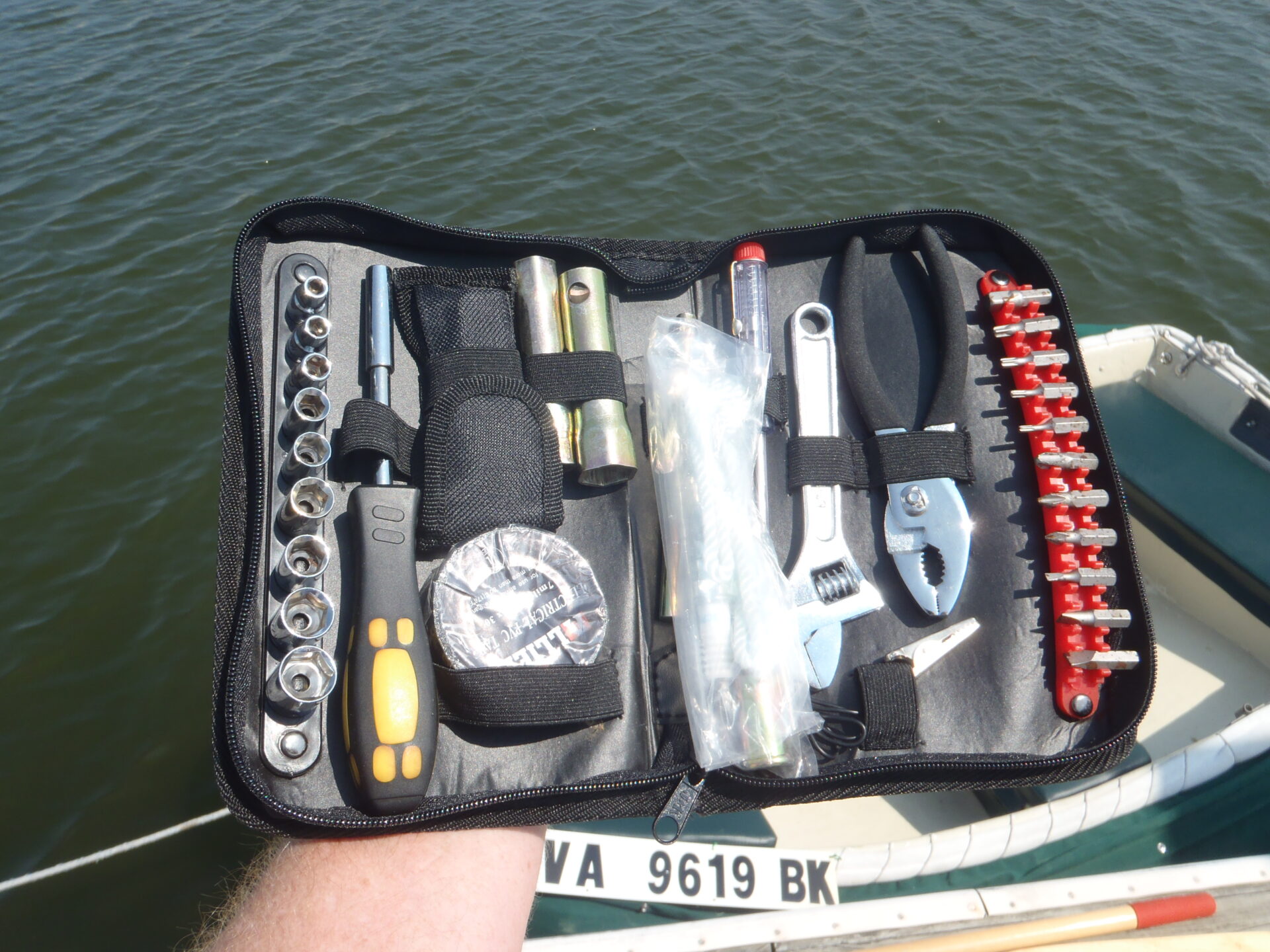
Oars If you propel your dinghy with either an outboard or sails you should always carry a pair of oars or at least a paddle. Ensure oarlocks are of adequate size and strength and unless self-locking, it’s also a good idea to have a light lanyard securing each oar to the dinghy to prevent loss while rowing (the oarlocks on some inflatables simply mount into a socket along the gunnels and tend to pop out fairly easily under anything but the lightest rowing).
Give the idea of practice a thought. Put in a little rowing time before any problems occur, just to see how your dinghy performs under various conditions. Some types (particularly inflatables) are poor rowers due to characteristically short oars with small blades and oarlocks positioned too near the water. One guy I know swears it’s easier to paddle an inflatable like a one-man canoe (while sitting or kneeling forward) than it is to row them.
Anchor Each dinghy should have an anchor and suitable length of nylon rode onboard. Being able to “put the brakes on” while trying to correct a problem (such as a stalled engine) can often keep a relatively minor situation from deteriorating into something worse. Folding grapnel and mushroom type anchors are easier to store and use, but typically don’t provide as much holding power as a small Danforth or plow (a short length of chain can also be added for increase holding power if desired).
The anchor itself should be securely mounted in an out of the way but easily accessible location, such as beneath a seat or perhaps the inside of the transom. I mounted mine beneath the centre seat of my sailing dinghy, with the rode stored in a small, glassed-in locker forward. Another option would be to store the anchor and rode in a small mesh or canvas bag, which not only serves as storage, but makes it easy to carry on and off the dinghy (mesh construction aids in drying after use).
Six Tips for Safe Dinghy Use
1) If your dinghy uses an outboard, be sure to attach the safety lanyard/emergency cut off to your person before starting the engine, particularly if the engine starts in gear.
2) It’s a proven fact that regardless of what Pepe Lopez or Captain Morgan says, you can’t fit more people in the dinghy after returning from the marina Tikki Bar than you could heading over. Know your dinghy’s carrying capacity and don’t exceed it. Newer dinghies will have a plate mounted on the transom stating maximum recommend capacity. Overloading a dinghy affects performance and stability, so if in doubt, make two trips rather than try to carry everything and everyone at once.
3) Because dinghies tend to move when you step in or out, position them so that you can firmly tie both bow and stern line to your boat prior to boarding and departing.
4) If you’re on the hook and will be returning to your boat after dark, make sure you have some type of light onboard to aid in locating your vessel. Mounting a solar powered walkway light to the stern rail is a popular choice, but I prefer hanging a Blue 15-inch neon light bar (available at most auto parts stores) from the cockpit. Not only is it distinctive, it also draws little power and looks really awesome at night.
5) Make sure your dinghy has adequate buoyancy to stay afloat if capsized or swamped. While not a problem with inflatables per say (unless punctured) some hard dinghies are negatively buoyant. If yours tends to sink when full of water, consider adding buoyancy either by glassing in watertight compartments or perhaps adding a few inflatable bags at strategic locations.
6) If your dinghy capsizes and you can’t right it, stay with it until rescued. Most dinghies will float and a boat (even an upside down one) is easier to spot in the water than a person.
Ditch Bags
As there’s no “one size fits all” approach when it comes to ditch bags, any list should be viewed as a starting point, one to be built upon and customized to better meet your particular needs. The following is a list of what I would consider to be prudent ditch bag safety gear for coastal cruising in B.C. and the Pacific Northwest. Bear in mind that it is not inclusive for all situations and that it should also be in addition to your normal compliment of personal safety equipment (i.e. lifejacket equipped with whistle, personal strobe, suitable knife and so on).
1) Personal Locator Beacon (PLB) preferably with built in GPS. This is the big one—in my opinion this is the single most important piece of gear you can place in your ditch bag. With PLB’s available for less than $300, there’s really no excuse for any boater heading any appreciable distance from shore not to have one.
2) A good waterproof/submersible handheld VHF—preferably one that floats. A hand-held VHF allows you to communicate or do periodic broadcasts to vessels and aircraft searching for you. Even if they can’t see you, you can let them know you’re alive and give them your position.
3) Waterproof hand-held GPS (lets you provide a position if you do raise someone on the handheld VHF). This could be skipped if your EPIRB, PLB, or VHF can provide you with GPS position information.
4) Flares—like accurate headshots during the zombie apocalypse, you just can’t have too many of them. SOLAS (Safety Of Life At Sea) flares are approved by the International Maritime Organization for use on the high seas and although more expensive, they burn brighter and last longer. In addition to pyrotechnics, newer Electronic Visual Distress Signals such as laser flares offer additional options.
5) Signal mirror—probably one of the best all-around distress signaling devices. Compact and simple to operate, signal mirrors have proven their worth in numerous rescues—in normal sunlight, flashes from a good signal mirror can be seen up to 50 miles away depending upon atmospheric conditions (the record distance during an at sea rescue is 105 miles). They even work on bright overcast days and moonlight nights to an extent.
5) Waterproof flashlight (one per crew member)—small dive flashlights are even better. Provides short-range illumination and attention getting capabilities.
6) Chemical light sticks (three plus an additional one for each member of the crew).
7) An all-weather safety whistle such as the one offered by www.stormwhistles.com/storm.html
8) Dive knife with a serrated (not saw-tooth) edge and a relatively short blade.
9) 30 feet of ¼-inch Polypropylene floating rope (plus a 10-foot section for each crewmember). Handy to tether everyone together and to your boat if possible. Many smaller vessels will continue to float even when overturned and it’s a lot easier to spot than someone in the water.
